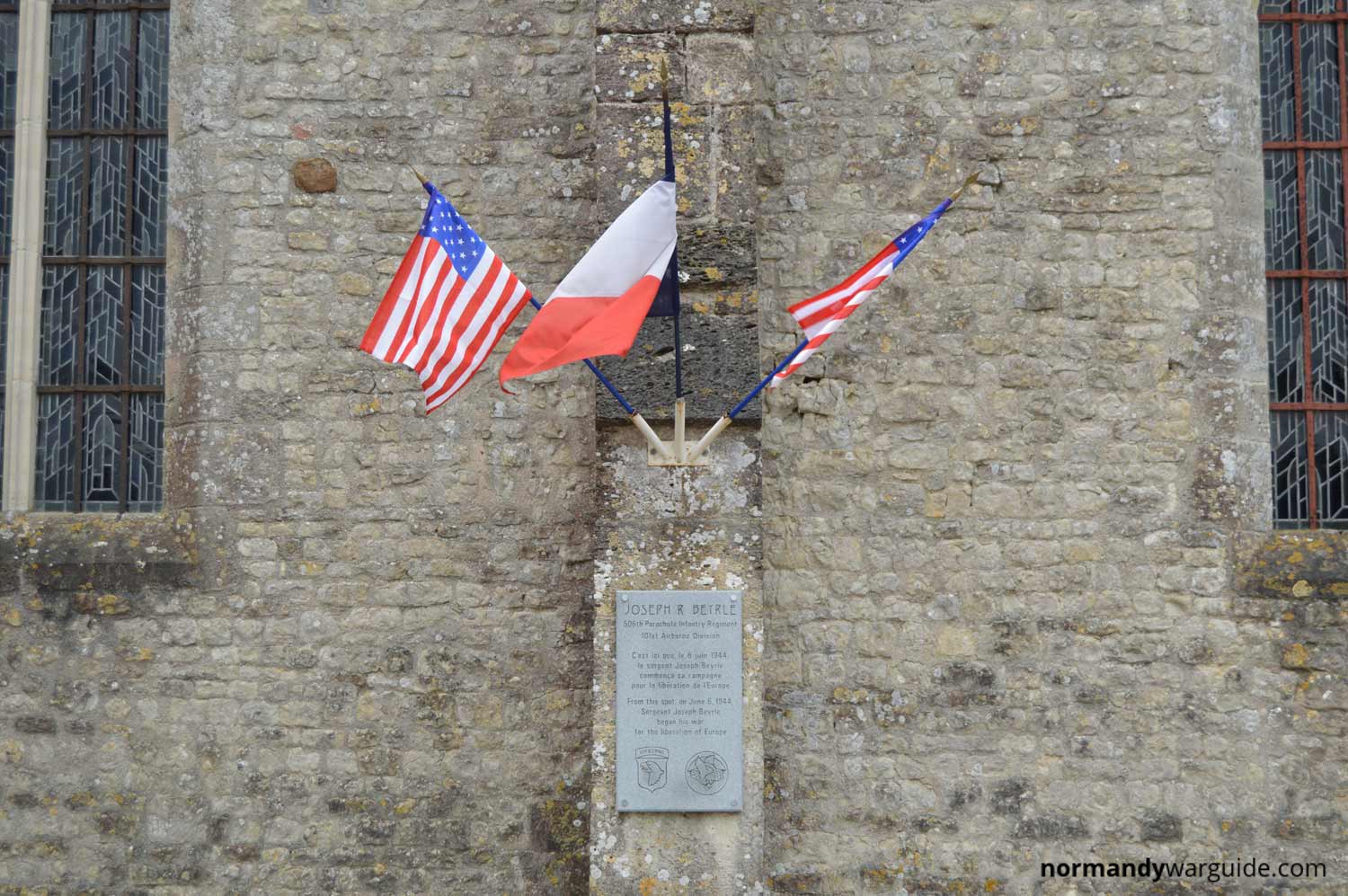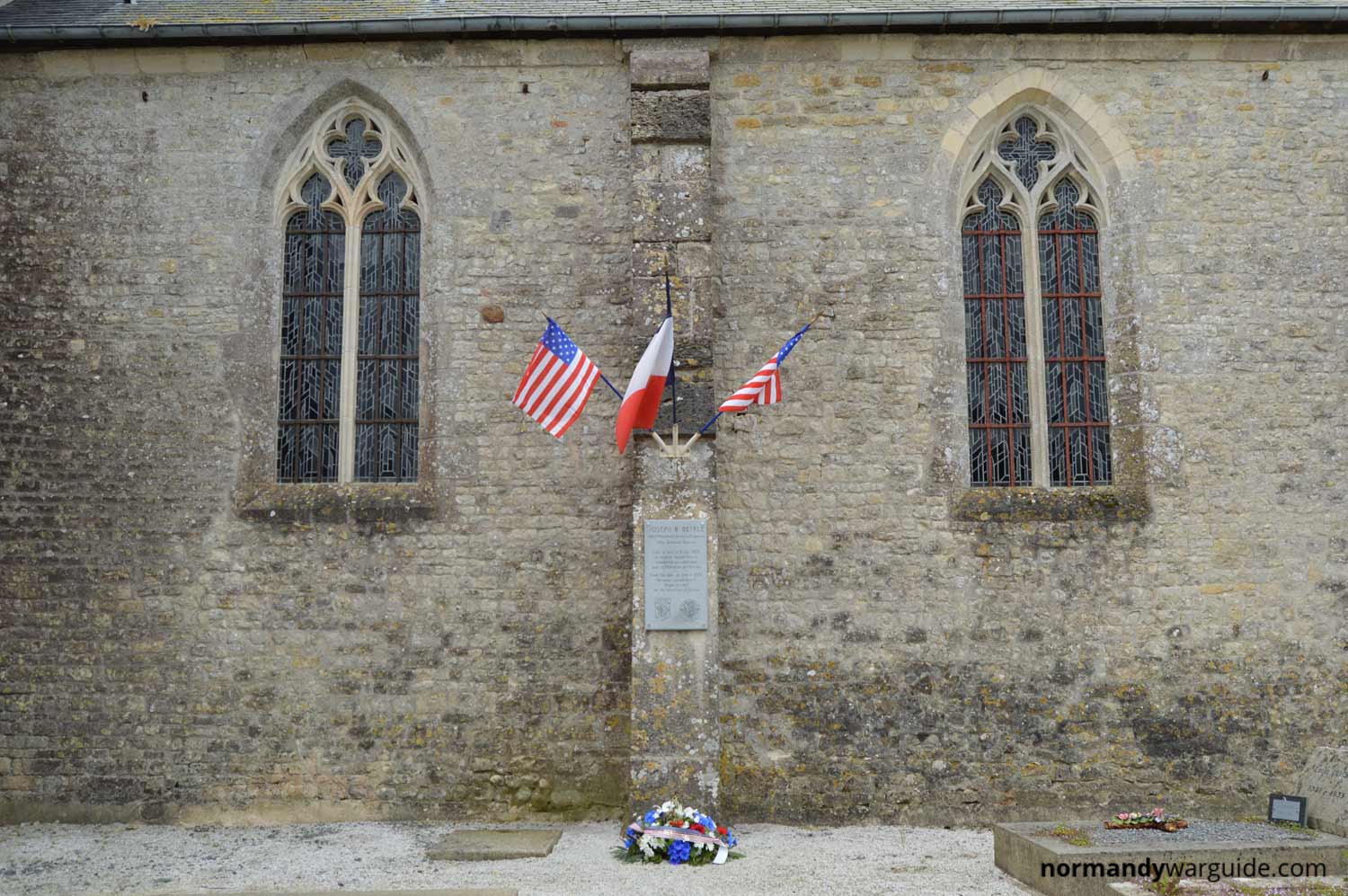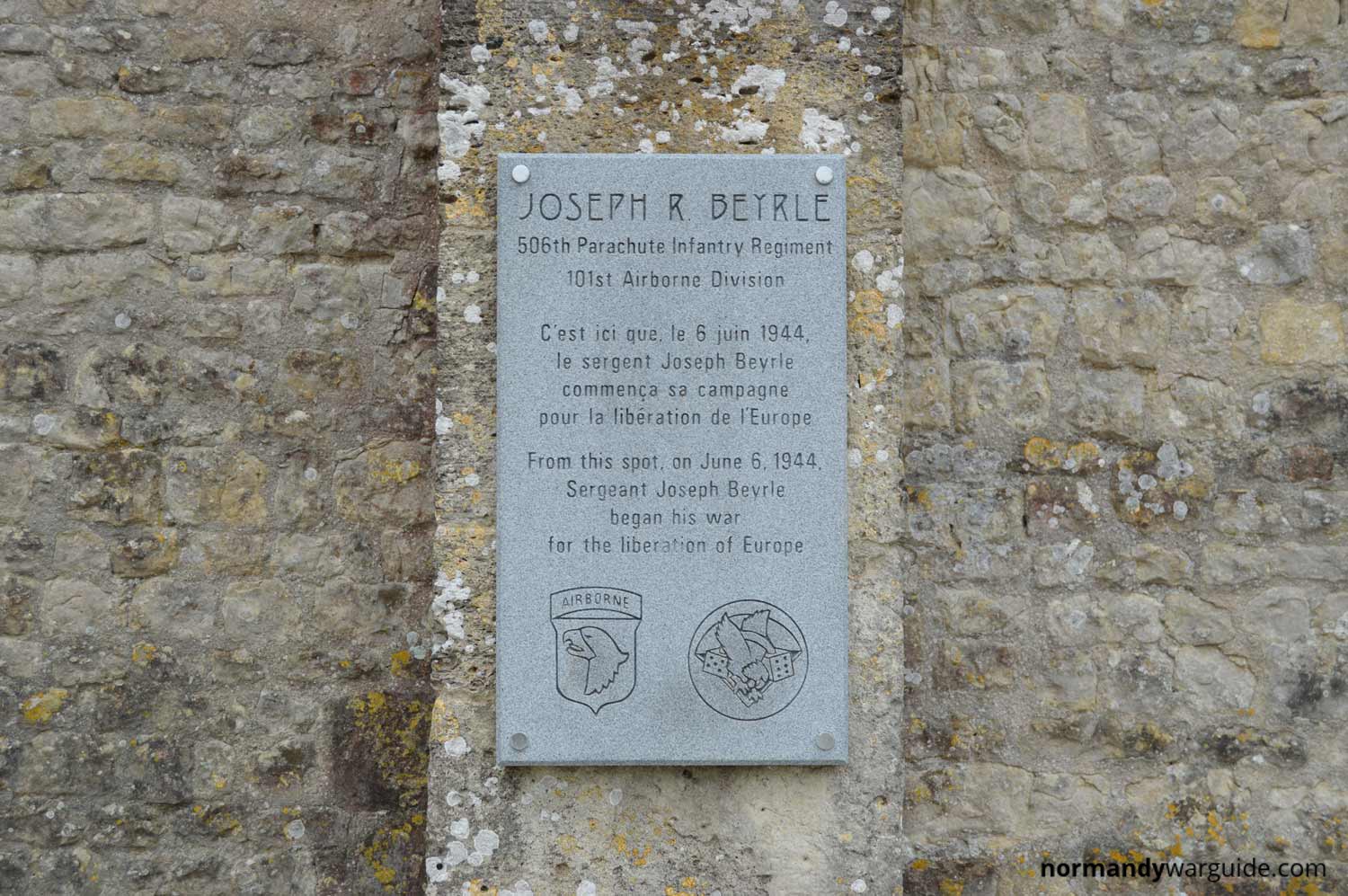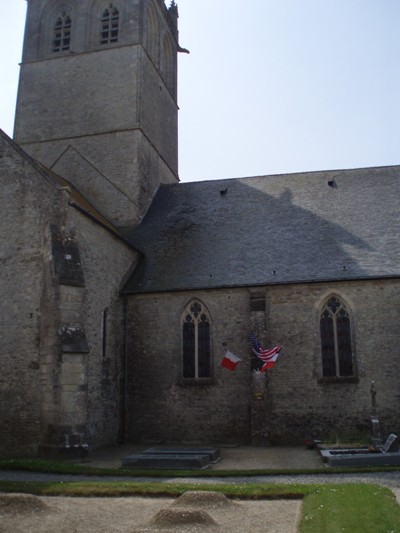Sergeant Joseph Beyrle Memorial Plaque
Details:
The plaque is mounted on the northern side of the church, on the exterior of the first buttress west from the steeple.
Plaque
An engraved granite rectangular plaque written in English and French commemorating Sgt Beyrle. It has a Screaming Eagle patch of the 101st Airborne Division on the left side and a Pair-o-Dice patch of the 506th Parachute Infantry Regiment on the right.
On 6 June, D-Day, Beyrle’s C-47 came under enemy fire over the Normandy coast and he was forced to jump from the exceedingly low altitude of 120 meters. He initially landed on the steep roof of the church in St. Côme-Du-Mont, then dropped into the graveyard below. Sergeant Beyrle lost contact with his fellow paratroopers but succeeded in blowing up a power station. He performed other sabotage missions before being captured by German soldiers a few days later.
Over the next seven months, Beyrle was held in seven different German prisons. He escaped twice, only to be recaptured each time. Beyrle and his fellow prisoners had been hoping to find the Soviet Army, which was a short distance away. After the second escape (in which he and his companions set out for Poland but boarded a train to Berlin by mistake), Beyrle was turned over to the Gestapo by a German civilian. Beaten and tortured, he was released to the German military after officials stepped in and determined that the Gestapo had no jurisdiction over prisoners of war. The Gestapo were about to shoot Joe and his comrades, claiming that he was an American spy who had parachuted into Berlin.
Beyrle was taken to the Stalag III-C POW camp in Alt Drewitz (now in the Drzewice district of town Kostrzyn nad Odrą, Poland), from which he escaped in early January 1945. He headed east, hoping to meet up with the Soviet Army. Encountering a Soviet tank battalion in the middle of January, he reportedly held up his hands, holding a pack of Lucky Strike cigarettes, and shouted in badly spoken Russian, “Amerikansky tovarishch! Amerikansky tovarishch! (“American comrade!”). Beyrle was eventually able to persuade the battalion’s commander (Captain Aleksandra Samusenko,
reportedly the only female tank officer of that rank in the war) into letting him fight alongside the unit on its way to Berlin, thus beginning his month-long stint in a Soviet tank battalion where his demolition expertise was appreciated.
Beyrle’s new battalion was the one that freed his former camp, Stalag III-C, at the end of January, but in the first week of February, he was wounded during an attack by German Stuka dive bombers. He was evacuated to a Soviet hospital in Landsberg (now Gorzów Wielkopolski in Poland), where he received a visit from Soviet Marshal Georgy Zhukov, who, intrigued by the only non-Russian in the hospital, provided Beyrle with official papers to rejoin American forces.
Source of photo: www.normandywarguide.com, www.tracesofwar.com
INFORMATION SOURCES:
- https://www.findagrave.com/memorial/10128470/joseph-robert-beyrle
- https://www.army.mil/article/127489/d_day_vets_remember_jumpin_joe_beyrle
- https://www.normandywarguide.com/place/joseph-beyrle-plaque
- Congressional Record: https://www.govinfo.gov/content/pkg/CRECB-1999-pt9/html/CRECB-1999-pt9-Pg13071-2.htm
- https://en.wikipedia.org/wiki/Joseph_Beyrle
- The Simple Sounds of Freedom: The True Story of the Only Soldier to Fight for Both America and the Soviet Union in World War 2, by Thomas H. Taylor (2002), reprinted later in paperback under the title Behind Hitler's Lines (2004).
Monument Text:
JOSEPH R. BEYRLE
506th Parachute Infantry Regiment
101st Airborne Division
C’est ici que le 6 juin 1944
le sergent Joseph Beyrle
commenca sa campagne
pour la libération de l’Europe
From this spot, on June 6, 1944
Sergent Joseph Beyrle
began his war
for the liberation of Europe
Commemorates:
People:
Units:
101st Airborne Division
506th Parachute Infantry Regiment, 101st Airborne Division
Soviet Military Forces
United States Army
Wars:
WWII
Other images :




